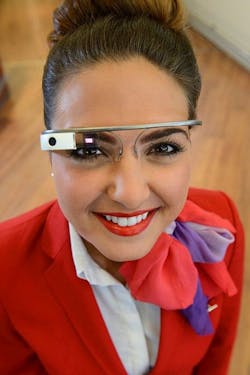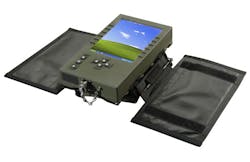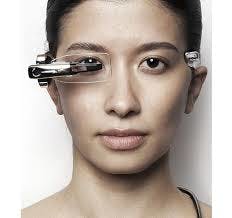Wearable technology drives aerospace efficiency and productivity
Seventy-two million wearable devices will be shipped this year, up a 173 percent from 26.4 million units shipped in 2014, according to International Data Corporation (IDC) analysts in Framingham, Mass., in the company’s Worldwide Quarterly Wearable Device Tracker. Wearable computing devices are “moving ahead with improved user interfaces, user experiences, and applications. These will raise the expectations of what a smart wearable can do. We're not there yet, but we're seeing the building blocks of what is to come,” explains Ramon Llamas, wearables research manager at IDC.
Virtually all new technology needs time to mature. The path from innovation to mainstream adoption can be a long road; this is especially true for members of the aerospace and defense community.
Virgin Atlantic gives Google Glass wearables a try
Increased adoption
Wearables are starting to be more widely adopted in aerospace and defense, and this trend “is likely to pick up momentum during the next few years as the technology continues to mature,” affirms John Schmidt, managing director, North American aerospace and defense business at Accenture in Chicago. Accenture is seeing significant interest from defense contractors and aerospace manufacturers wanting to exploit the technology, he explains. “The industry is rapidly coalescing toward an all-digital mindset across the board, and wearable devices and technologies are one key driver of this major industry trend.
“Wearable technology provides instant access to critical information, improves quality, and helps increase collaboration. This technology enhances existing workflows and opens new opportunities in many aspects of this industry,” Schmidt adds. “The technology may also increase workforce productivity, reduce the risk of errors, and eliminate the need for travel. Use of this hands-free technology also improves safety in complex assembly or maintenance activities.”
Airbus provides a real-world example of how wearable technology is being used – a trend that will only accelerate during the next few years, Schmidt predicts.
Airbus adoption
“Accenture and Airbus have developed what we believe to be one of the most intriguing and current applications for wearables in aerospace and defense. The two companies delivered a proof of concept, using the latest wearable technology, to help Airbus reduce the complexity of assembling cabin seats and decreasing the time required to complete this task,” Schmidt describes.
Armed with the wearable electronics technology, personnel marked all aircraft seat locations down to the last millimeter, as well as checked for accuracy and quality. For Airbus, time spent per aircraft was divided by six, error rate reduced to zero, and marking operations revalued.
“This proof of concept shows how wearable technologies offer new and important benefits in the aerospace and defense industry,” Schmidt says. The project was launched in January 2015, and the first prototype was completed less than a month later. To accelerate the timeline, Airbus and Accenture worked in start-up mode, enabling rapid iterations by engineers at both companies. The technology is currently being industrialized for cabin furnishing on the Airbus A330 wide-body jet airliner. The airframe manufacturer’s other final assembly lines should quickly follow, as well as other Airbus divisions, such as Airbus Defense and Space.
“Wearable smart glasses are being used for airplane manufacturing applications. Quality and field service are other functional areas where smart glasses can be used. Potential use cases involve processes that are time-consuming and error-prone, and that involve complicated assembly procedures,” Schmidt says. “Smart glasses can be a catalytic tool to accelerate the industry’s momentum toward being completely digital – from both a business and technology perspective.
“Wearables can be a game changer especially because they are instrumental in taking the industry to where it is going on a massive scale: to an all-digital mindset all the time,” Schmidt says.
IoT, security, and the connected worker
“Wearables are one great example of a major technology trend called the Internet of Things (IoT), which is all about more devices connecting to more different devices loaded with more information running over more networks,” Schmidt explains. “Digital is driving all this exponential and multi-faceted growth. The aerospace and defense industry will evolve in sync with this mega-trend.”
Increased adoption of wearables is not without its challenges, however. “As the industry uses more [wearable devices], more data will be stored, sent, and retrieved from them. Ensuring that this growing amount of information remains secure is going to become more challenging than ever,” Schmidt says.
“The data must be secure,” Schmidt insists. In the Airbus airplane manufacturing application, for example, data the technician can access using the smart glasses needs to be secure enough that competitors cannot access it from any IoT devices or networks to which they connect. With this in mind, Accenture has taken a deliberate and phased approach: Once the use case has been validated, integrating to the back-end systems and scaling to more users will be a critical next step during the pilot phase, after which full-scale implementation occurs.
It is becoming important to take a holistic approach, beyond wearables, and consider all aspects of the connected worker, Schmidt says. “Bringing together contextually relevant information for manufacturers and the military, the connected worker provides a suite of capabilities for manufacturing management and operators, through wearable devices, beacons, and sensors.”
Examples include:
· providing smart glasses so the operator can complete a guided procedure;
· using digital match to confirm first-time quality for an installation and using a digital image to record the completion;
· using a wearable device to track health and safety characteristics such as fatigue and/or repetitive activities; and
· placing sensors on assets such as forklifts to know where the asset resides within a manufacturing plant. All these capabilities extend the value of wearable devices within aerospace and defense.
“This trend is not just coming,” Schmidt affirms. “It’s real already. And it’s going to pick up momentum and remain in sync with the industry’s push towards becoming digital in every way.”






